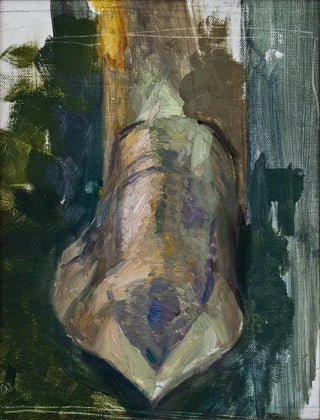Art print | Sketch for The Knight and the Young Girl The Knight's Shoe - Richard Bergh


View from behind

Frame (optional)
Richard Bergh's "Sketch for The Knight and the Young Girl The Knight's Shoe" is a captivating gateway into a universe where romanticism and visual storytelling converge. This art print, both delicate and evocative, captures a suspended moment in time, where human emotions and epic narratives intertwine. By immersing oneself in this piece, the viewer is invited to explore the subtleties of life and human relationships, all while being enveloped in an atmosphere imbued with mystery and poetry. Bergh's artistry, through this art print, transcends mere representations to touch the very essence of feelings and human interactions.
Style and uniqueness of the work
Richard Bergh's style is characterized by an exceptional mastery of light and color, which bestows his art prints with unparalleled depth and warmth. In "Sketch for The Knight and the Young Girl The Knight's Shoe," the characters are rendered with a tenderness that emphasizes their humanity. Facial expressions, full of emotion, and the elegant postures of the protagonists reveal a palpable intimacy, inviting the viewer to immerse themselves in their world. The composition is carefully orchestrated, with each element arranged to guide the eye and enhance the storytelling. This artistic choice, combined with a soft and harmonious color palette, creates an atmosphere that is both dreamy and realistic, where the viewer can feel the tensions and passions animating the characters.
The artist and his influence
Richard Bergh, an emblematic figure of the Swedish artistic movement at the end of the 19th century, established himself through his unique style and his ability to capture the human soul. Influenced by romanticism and impressionism, he integrated elements of these movements while developing a personal voice that is entirely his own. His work reflects a constant pursuit of beauty and truth, through a sensitive perspective on daily life and human relationships. Bergh also played a key role in the development of

Matte finish

View from behind

Frame (optional)
Richard Bergh's "Sketch for The Knight and the Young Girl The Knight's Shoe" is a captivating gateway into a universe where romanticism and visual storytelling converge. This art print, both delicate and evocative, captures a suspended moment in time, where human emotions and epic narratives intertwine. By immersing oneself in this piece, the viewer is invited to explore the subtleties of life and human relationships, all while being enveloped in an atmosphere imbued with mystery and poetry. Bergh's artistry, through this art print, transcends mere representations to touch the very essence of feelings and human interactions.
Style and uniqueness of the work
Richard Bergh's style is characterized by an exceptional mastery of light and color, which bestows his art prints with unparalleled depth and warmth. In "Sketch for The Knight and the Young Girl The Knight's Shoe," the characters are rendered with a tenderness that emphasizes their humanity. Facial expressions, full of emotion, and the elegant postures of the protagonists reveal a palpable intimacy, inviting the viewer to immerse themselves in their world. The composition is carefully orchestrated, with each element arranged to guide the eye and enhance the storytelling. This artistic choice, combined with a soft and harmonious color palette, creates an atmosphere that is both dreamy and realistic, where the viewer can feel the tensions and passions animating the characters.
The artist and his influence
Richard Bergh, an emblematic figure of the Swedish artistic movement at the end of the 19th century, established himself through his unique style and his ability to capture the human soul. Influenced by romanticism and impressionism, he integrated elements of these movements while developing a personal voice that is entirely his own. His work reflects a constant pursuit of beauty and truth, through a sensitive perspective on daily life and human relationships. Bergh also played a key role in the development of






